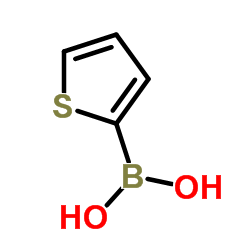A fluorescein-labeled AmpC β-lactamase allows rapid characterization of β-lactamase inhibitors by real-time fluorescence monitoring of the β-lactamase-inhibitor interactions.
Man-Wah Tsang, Pak-Ho Chan, Sze-Yan Liu, Kwok-Yin Wong, Yun-Chung Leung
Index: Biotechnol. J. 11 , 257-65, (2016)
Full Text: HTML
Abstract
Rapid emergence of class C β-lactamases has urged an immediate need for developing class C β-lactamase specific inhibitors for effective clinical treatment. To facilitate the development of effective class C β-lactamase inhibitors, we propose a new approach for a rapid analysis of the interaction of AmpC β-lactamase and its inhibitors using our recently developed V211Cf fluorescent β-lactamase biosensor during drug screening. Since the fluorescein of V211Cf can report the local environment change in the active site of AmpC β-lactamase, fluorescence responses of V211Cf toward its substrates/inhibitors can provide real-time traces of the dynamic change of the interaction of the β-lactamase with its substrates/inhibitors. In this study, we found that V211Cf displayed distinct fluorescence signal patterns toward different kinds of inhibitors (including clavulanic acid, sulbactam, tazobactam and 2-thiopheneboronic acid) due to the differences in their interactions with β-lactamase. V211Cf not only enables a high throughput screening for inhibitors but can also provide a rapid preliminary indication on the inhibitor's potency and stability to β-lactamase's hydrolytic action as well as how the inhibitors interact with the target enzyme, thereby speeding up the drug discovery and development cycle of class C β-lactamase inhibitors. Copyright © 2015 WILEY-VCH Verlag GmbH & Co. KGaA, Weinheim.
Related Compounds
| Structure | Name/CAS No. | Molecular Formula | Articles |
|---|---|---|---|
 |
Thienylboronic acid
CAS:6165-68-0 |
C4H5BO2S |
|
Geometry relaxation-induced large Stokes shift in red-emitti...
2012-03-02 [J. Org. Chem. 5th ed., 77 , 2192-2206, (2012)] |
|
Design of potent and selective hybrid inhibitors of the mito...
2012-04-12 [J. Med. Chem. 7th ed., 55 , 3228-3241, (2012)] |
|
Fullerenyl boronic esters: ferric perchlorate-mediated synth...
2012-04-06 [Org. Lett. 7th ed., 14 , 1800-1803, (2012)] |
|
Ligand effects on the stereochemical outcome of Suzuki-Miyau...
2012-04-20 [J. Org. Chem. 8th ed., 77 , 3700-3703, (2012)] |
|
Polycyclic aromatic triptycenes: oxygen substitution cycliza...
2012-05-02 [J. Am. Chem. Soc. 17th ed., 134 , 7282-7285, (2012)] |